31.利用linprog 解决 投资问题(matlab程序)
1.简述
语法:[X,FVAL] = linprog(f,a,b,Aeq,Beq,LB,UB,X0);
X 为最终解 , FVAL为最终解对应的函数值
*注意:求最大值时,结果FVAL需要取反*
f 为决策函数的系数矩阵。
*注意:当所求为最大值时,系数矩阵需要取反*
a 为约束条件中不等式组的系数矩阵 ,a的列数等于f的列数
*注意:当不等号为 > 或 ≥ 时,矩阵需要取反*
b 为约束条件中不等式组右边的值
*注意:当不等号为 > 或 ≥ 时,矩阵需要取反*
Aeq 为约束条件中等式组的系数矩阵 ,Aeq的列数等于f的列数
Beq 为约束条件中等式组右边的值
LB、UB 是解的范围
X0 为初始值
2.代码
主程序:
%% 投资问题
f=[-0.2;-0.12;-0.09;-0.14];
A=[1,-1,-1,-1;0,-1,-1,1];
b=[0;0];
Aeq=[1,1,1,1];
beq=1;
l=[0 0 0];
u=[1 1 1];
[xo,yo,exitflag]=linprog(f,A,b,Aeq,beq,l,u)
子程序:
function [x,fval,exitflag,output,lambda]=linprog(f,A,B,Aeq,Beq,lb,ub,x0,options)
%LINPROG Linear programming.
% X = LINPROG(f,A,b) attempts to solve the linear programming problem:
%
% min f'*x subject to: A*x <= b
% x
%
% X = LINPROG(f,A,b,Aeq,beq) solves the problem above while additionally
% satisfying the equality constraints Aeq*x = beq. (Set A=[] and B=[] if
% no inequalities exist.)
%
% X = LINPROG(f,A,b,Aeq,beq,LB,UB) defines a set of lower and upper
% bounds on the design variables, X, so that the solution is in
% the range LB <= X <= UB. Use empty matrices for LB and UB
% if no bounds exist. Set LB(i) = -Inf if X(i) is unbounded below;
% set UB(i) = Inf if X(i) is unbounded above.
%
% X = LINPROG(f,A,b,Aeq,beq,LB,UB,X0) sets the starting point to X0. This
% option is only available with the active-set algorithm. The default
% interior point algorithm will ignore any non-empty starting point.
%
% X = LINPROG(PROBLEM) finds the minimum for PROBLEM. PROBLEM is a
% structure with the vector 'f' in PROBLEM.f, the linear inequality
% constraints in PROBLEM.Aineq and PROBLEM.bineq, the linear equality
% constraints in PROBLEM.Aeq and PROBLEM.beq, the lower bounds in
% PROBLEM.lb, the upper bounds in PROBLEM.ub, the start point
% in PROBLEM.x0, the options structure in PROBLEM.options, and solver
% name 'linprog' in PROBLEM.solver. Use this syntax to solve at the
% command line a problem exported from OPTIMTOOL.
%
% [X,FVAL] = LINPROG(f,A,b) returns the value of the objective function
% at X: FVAL = f'*X.
%
% [X,FVAL,EXITFLAG] = LINPROG(f,A,b) returns an EXITFLAG that describes
% the exit condition. Possible values of EXITFLAG and the corresponding
% exit conditions are
%
% 3 LINPROG converged to a solution X with poor constraint feasibility.
% 1 LINPROG converged to a solution X.
% 0 Maximum number of iterations reached.
% -2 No feasible point found.
% -3 Problem is unbounded.
% -4 NaN value encountered during execution of algorithm.
% -5 Both primal and dual problems are infeasible.
% -7 Magnitude of search direction became too small; no further
% progress can be made. The problem is ill-posed or badly
% conditioned.
% -9 LINPROG lost feasibility probably due to ill-conditioned matrix.
%
% [X,FVAL,EXITFLAG,OUTPUT] = LINPROG(f,A,b) returns a structure OUTPUT
% with the number of iterations taken in OUTPUT.iterations, maximum of
% constraint violations in OUTPUT.constrviolation, the type of
% algorithm used in OUTPUT.algorithm, the number of conjugate gradient
% iterations in OUTPUT.cgiterations (= 0, included for backward
% compatibility), and the exit message in OUTPUT.message.
%
% [X,FVAL,EXITFLAG,OUTPUT,LAMBDA] = LINPROG(f,A,b) returns the set of
% Lagrangian multipliers LAMBDA, at the solution: LAMBDA.ineqlin for the
% linear inequalities A, LAMBDA.eqlin for the linear equalities Aeq,
% LAMBDA.lower for LB, and LAMBDA.upper for UB.
%
% NOTE: the interior-point (the default) algorithm of LINPROG uses a
% primal-dual method. Both the primal problem and the dual problem
% must be feasible for convergence. Infeasibility messages of
% either the primal or dual, or both, are given as appropriate. The
% primal problem in standard form is
% min f'*x such that A*x = b, x >= 0.
% The dual problem is
% max b'*y such that A'*y + s = f, s >= 0.
%
% See also QUADPROG.
% Copyright 1990-2018 The MathWorks, Inc.
% If just 'defaults' passed in, return the default options in X
% Default MaxIter, TolCon and TolFun is set to [] because its value depends
% on the algorithm.
defaultopt = struct( ...
'Algorithm','dual-simplex', ...
'Diagnostics','off', ...
'Display','final', ...
'LargeScale','on', ...
'MaxIter',[], ...
'MaxTime', Inf, ...
'Preprocess','basic', ...
'TolCon',[],...
'TolFun',[]);
if nargin==1 && nargout <= 1 && strcmpi(f,'defaults')
x = defaultopt;
return
end
% Handle missing arguments
if nargin < 9
options = [];
% Check if x0 was omitted and options were passed instead
if nargin == 8
if isa(x0, 'struct') || isa(x0, 'optim.options.SolverOptions')
options = x0;
x0 = [];
end
else
x0 = [];
if nargin < 7
ub = [];
if nargin < 6
lb = [];
if nargin < 5
Beq = [];
if nargin < 4
Aeq = [];
end
end
end
end
end
end
% Detect problem structure input
problemInput = false;
if nargin == 1
if isa(f,'struct')
problemInput = true;
[f,A,B,Aeq,Beq,lb,ub,x0,options] = separateOptimStruct(f);
else % Single input and non-structure.
error(message('optim:linprog:InputArg'));
end
end
% No options passed. Set options directly to defaultopt after
allDefaultOpts = isempty(options);
% Prepare the options for the solver
options = prepareOptionsForSolver(options, 'linprog');
if nargin < 3 && ~problemInput
error(message('optim:linprog:NotEnoughInputs'))
end
% Define algorithm strings
thisFcn = 'linprog';
algIP = 'interior-point-legacy';
algDSX = 'dual-simplex';
algIP15b = 'interior-point';
% Check for non-double inputs
msg = isoptimargdbl(upper(thisFcn), {'f','A','b','Aeq','beq','LB','UB', 'X0'}, ...
f, A, B, Aeq, Beq, lb, ub, x0);
if ~isempty(msg)
error('optim:linprog:NonDoubleInput',msg);
end
% After processing options for optionFeedback, etc., set options to default
% if no options were passed.
if allDefaultOpts
% Options are all default
options = defaultopt;
end
if nargout > 3
computeConstrViolation = true;
computeFirstOrderOpt = true;
% Lagrange multipliers are needed to compute first-order optimality
computeLambda = true;
else
computeConstrViolation = false;
computeFirstOrderOpt = false;
computeLambda = false;
end
% Algorithm check:
% If Algorithm is empty, it is set to its default value.
algIsEmpty = ~isfield(options,'Algorithm') || isempty(options.Algorithm);
if ~algIsEmpty
Algorithm = optimget(options,'Algorithm',defaultopt,'fast',allDefaultOpts);
OUTPUT.algorithm = Algorithm;
% Make sure the algorithm choice is valid
if ~any(strcmp({algIP; algDSX; algIP15b},Algorithm))
error(message('optim:linprog:InvalidAlgorithm'));
end
else
Algorithm = algDSX;
OUTPUT.algorithm = Algorithm;
end
% Option LargeScale = 'off' is ignored
largescaleOn = strcmpi(optimget(options,'LargeScale',defaultopt,'fast',allDefaultOpts),'on');
if ~largescaleOn
[linkTag, endLinkTag] = linkToAlgDefaultChangeCsh('linprog_warn_largescale');
warning(message('optim:linprog:AlgOptsConflict', Algorithm, linkTag, endLinkTag));
end
% Options setup
diagnostics = strcmpi(optimget(options,'Diagnostics',defaultopt,'fast',allDefaultOpts),'on');
switch optimget(options,'Display',defaultopt,'fast',allDefaultOpts)
case {'final','final-detailed'}
verbosity = 1;
case {'off','none'}
verbosity = 0;
case {'iter','iter-detailed'}
verbosity = 2;
case {'testing'}
verbosity = 3;
otherwise
verbosity = 1;
end
% Set the constraints up: defaults and check size
[nineqcstr,nvarsineq] = size(A);
[neqcstr,nvarseq] = size(Aeq);
nvars = max([length(f),nvarsineq,nvarseq]); % In case A is empty
if nvars == 0
% The problem is empty possibly due to some error in input.
error(message('optim:linprog:EmptyProblem'));
end
if isempty(f), f=zeros(nvars,1); end
if isempty(A), A=zeros(0,nvars); end
if isempty(B), B=zeros(0,1); end
if isempty(Aeq), Aeq=zeros(0,nvars); end
if isempty(Beq), Beq=zeros(0,1); end
% Set to column vectors
f = f(:);
B = B(:);
Beq = Beq(:);
if ~isequal(length(B),nineqcstr)
error(message('optim:linprog:SizeMismatchRowsOfA'));
elseif ~isequal(length(Beq),neqcstr)
error(message('optim:linprog:SizeMismatchRowsOfAeq'));
elseif ~isequal(length(f),nvarsineq) && ~isempty(A)
error(message('optim:linprog:SizeMismatchColsOfA'));
elseif ~isequal(length(f),nvarseq) && ~isempty(Aeq)
error(message('optim:linprog:SizeMismatchColsOfAeq'));
end
[x0,lb,ub,msg] = checkbounds(x0,lb,ub,nvars);
if ~isempty(msg)
exitflag = -2;
x = x0; fval = []; lambda = [];
output.iterations = 0;
output.constrviolation = [];
output.firstorderopt = [];
output.algorithm = ''; % not known at this stage
output.cgiterations = [];
output.message = msg;
if verbosity > 0
disp(msg)
end
return
end
if diagnostics
% Do diagnostics on information so far
gradflag = []; hessflag = []; constflag = false; gradconstflag = false;
non_eq=0;non_ineq=0; lin_eq=size(Aeq,1); lin_ineq=size(A,1); XOUT=ones(nvars,1);
funfcn{1} = []; confcn{1}=[];
diagnose('linprog',OUTPUT,gradflag,hessflag,constflag,gradconstflag,...
XOUT,non_eq,non_ineq,lin_eq,lin_ineq,lb,ub,funfcn,confcn);
end
% Throw warning that x0 is ignored (true for all algorithms)
if ~isempty(x0) && verbosity > 0
fprintf(getString(message('optim:linprog:IgnoreX0',Algorithm)));
end
if strcmpi(Algorithm,algIP)
% Set the default values of TolFun and MaxIter for this algorithm
defaultopt.TolFun = 1e-8;
defaultopt.MaxIter = 85;
[x,fval,lambda,exitflag,output] = lipsol(f,A,B,Aeq,Beq,lb,ub,options,defaultopt,computeLambda);
elseif strcmpi(Algorithm,algDSX) || strcmpi(Algorithm,algIP15b)
% Create linprog options object
algoptions = optimoptions('linprog', 'Algorithm', Algorithm);
% Set some algorithm specific options
if isfield(options, 'InternalOptions')
algoptions = setInternalOptions(algoptions, options.InternalOptions);
end
thisMaxIter = optimget(options,'MaxIter',defaultopt,'fast',allDefaultOpts);
if strcmpi(Algorithm,algIP15b)
if ischar(thisMaxIter)
error(message('optim:linprog:InvalidMaxIter'));
end
end
if strcmpi(Algorithm,algDSX)
algoptions.Preprocess = optimget(options,'Preprocess',defaultopt,'fast',allDefaultOpts);
algoptions.MaxTime = optimget(options,'MaxTime',defaultopt,'fast',allDefaultOpts);
if ischar(thisMaxIter) && ...
~strcmpi(thisMaxIter,'10*(numberofequalities+numberofinequalities+numberofvariables)')
error(message('optim:linprog:InvalidMaxIter'));
end
end
% Set options common to dual-simplex and interior-point-r2015b
algoptions.Diagnostics = optimget(options,'Diagnostics',defaultopt,'fast',allDefaultOpts);
algoptions.Display = optimget(options,'Display',defaultopt,'fast',allDefaultOpts);
thisTolCon = optimget(options,'TolCon',defaultopt,'fast',allDefaultOpts);
if ~isempty(thisTolCon)
algoptions.TolCon = thisTolCon;
end
thisTolFun = optimget(options,'TolFun',defaultopt,'fast',allDefaultOpts);
if ~isempty(thisTolFun)
algoptions.TolFun = thisTolFun;
end
if ~isempty(thisMaxIter) && ~ischar(thisMaxIter)
% At this point, thisMaxIter is either
% * a double that we can set in the options object or
% * the default string, which we do not have to set as algoptions
% is constructed with MaxIter at its default value
algoptions.MaxIter = thisMaxIter;
end
% Create a problem structure. Individually creating each field is quicker
% than one call to struct
problem.f = f;
problem.Aineq = A;
problem.bineq = B;
problem.Aeq = Aeq;
problem.beq = Beq;
problem.lb = lb;
problem.ub = ub;
problem.options = algoptions;
problem.solver = 'linprog';
% Create the algorithm from the options.
algorithm = createAlgorithm(problem.options);
% Check that we can run the problem.
try
problem = checkRun(algorithm, problem, 'linprog');
catch ME
throw(ME);
end
% Run the algorithm
[x, fval, exitflag, output, lambda] = run(algorithm, problem);
% If exitflag is {NaN, <aString>}, this means an internal error has been
% thrown. The internal exit code is held in exitflag{2}.
if iscell(exitflag) && isnan(exitflag{1})
handleInternalError(exitflag{2}, 'linprog');
end
end
output.algorithm = Algorithm;
% Compute constraint violation when x is not empty (interior-point/simplex presolve
% can return empty x).
if computeConstrViolation && ~isempty(x)
output.constrviolation = max([0; norm(Aeq*x-Beq, inf); (lb-x); (x-ub); (A*x-B)]);
else
output.constrviolation = [];
end
% Compute first order optimality if needed. This information does not come
% from either qpsub, lipsol, or simplex.
if exitflag ~= -9 && computeFirstOrderOpt && ~isempty(lambda)
output.firstorderopt = computeKKTErrorForQPLP([],f,A,B,Aeq,Beq,lb,ub,lambda,x);
else
output.firstorderopt = [];
end
3.运行结果

相关文章:

31.利用linprog 解决 投资问题(matlab程序)
1.简述 语法:[X,FVAL] linprog(f,a,b,Aeq,Beq,LB,UB,X0); X 为最终解 , FVAL为最终解对应的函数值 *注意:求最大值时,结果FVAL需要取反* f 为决策函数的系数矩阵。 *注意:当所求为最大值…...

整数线性规划求解工具isl使用方法
整数线性规划求解工具 Integer Set Library 代码 参考 isl是一个用于多面体模型调度实现的c/c库。通过isl,我们可以对模型进行自动的调度,循环优化等。 编译 ISL,Integer Set Library 版本0.22.1,http://isl.gforge.inria.fr/ README关于…...
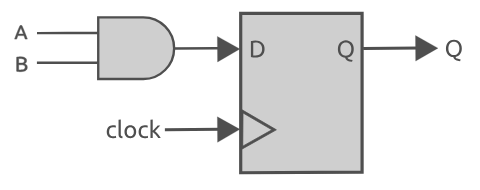
SystemC的调度器
文章目录 前言调度器初始化evaluatewait updatenotify delta notificationtime notification仿真结束 前言 SystemC是基于C的库,主要用来对 IC 进行功能建模和性能建模。有时也被用来当做 RTL (register transfer level) 级的升级版 HLS(High Level synthesis) 直接…...

SpringBoot、SpringCloud 版本查看
1、SpringBoot 官网地址 https://spring.io/projects/spring-boot#learn spring-boot-starter-parent 版本列表可查看: https://mvnrepository.com/artifact/org.springframework.boot/spring-boot-starter-parent 2、SpringCloud 官网地址 https://spring.io/pro…...
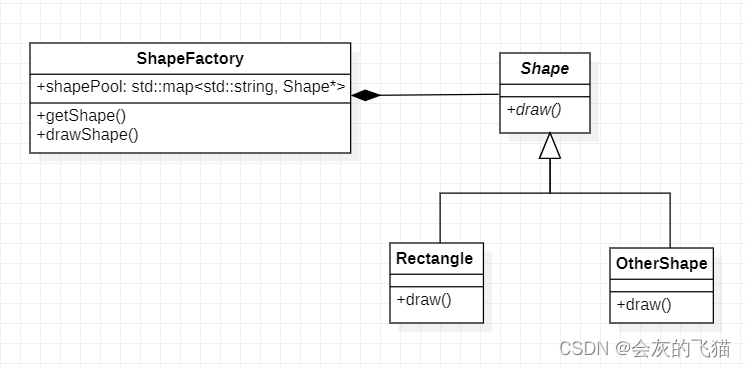
AI Chat 设计模式:12. 享元模式
本文是该系列的第十二篇,采用问答式的方式展开,问题由我提出,答案由 Chat AI 作出,灰色背景的文字则主要是我的一些思考和补充。 问题列表 Q.1 给我介绍一下享元模式A.1Q.2 也就是说,其实共享的是对象的内部状态&…...

Spring mvc:SpringServletContainerInitializer
SpringServletContainerInitializer实现了Servlet3.0规范中定义的ServletContainerInitializer: public interface ServletContainerInitializer {void onStartup(Set<Class<?>> c, ServletContext ctx) throws ServletException; }SpringServletCont…...

微信小程序中的全局数据共享(状态管理)使用介绍
开发工具:微信开发者工具Stable 1.06 一、状态管理简介 微信小程序全局状态是指可以在不同页面之间共享的数据或状态。 它可以存储用户的登录状态、个人信息、全局配置信息等。 二、安装MobX 1、安装NPM 在资源管理器的空白地方点右键,选择“在外部…...
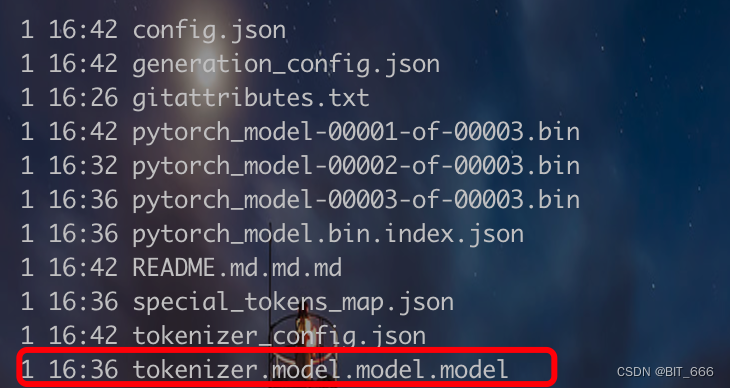
LLM - LLama 模型读取报错 TypeError: not a string
一.引言 读取 LLama2 模型时报错 TypeError: not a string 看异常栈是 AutoTokenizer.from_pretrained 时候的异常。 二.问题解决 出现类似加载模型异常的问题,大致分两类: ◆ 模型地址异常 脚本里传的 pretrained_model Path 有问题,加 …...
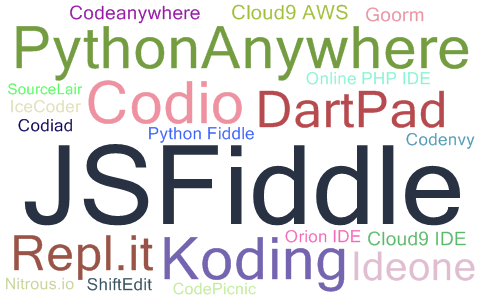
2023年08月在线IDE流行度最新排名
点击查看最新在线IDE流行度最新排名(每月更新) 2023年08月在线IDE流行度最新排名 TOP 在线IDE排名是通过分析在线ide名称在谷歌上被搜索的频率而创建的 在线IDE被搜索的次数越多,人们就会认为它越受欢迎。原始数据来自谷歌Trends 如果您相…...

k8s的架构
简介 一个 K8s 系统,通常称为一个 K8s 集群,集群主要包括两个部分 一个 Master 节点(主节点) 一群 Node 节点(计算节点) Master节点 Master 节点包括 API Server、Scheduler、Controller manager、etcd A…...

数据分析基础-Excel图表的美化操作(按照教程一步步操作)
一、原始数据 包含月份和对应的销量和产量。 时间销量产量1月60722月38673月28344月58685月67596月72357月61428月24319月556710月243511月122112月2645 二、原始的图表设计-采用Excel自带模板 三、优化思路 1、删除多余元素 2、弱化次要元素 对于可以弱化的元素,…...
)
Mybatis嵌套查询(一对多)
一、返回数据Java类 Data public class PersonnelDetailsVO{/*** 主键*/Column(name "ID", length 36, precision 0)private String id;/*** 人员姓名*/Column(name "OPERATE_NAME", length 36, precision 0)private String operateName;/*** 单位i…...

web前端转正工作总结范文5篇
web前端转正工作总结(篇1) 来到__有限公司已经三个月了,目前的工作是前端开发,我是一名应届毕业生,之前没有过工作经验,在刚来到__这个大家庭的时候,我就被这里的工作气氛深深地吸引࿰…...

P1144 最短路计数
最短路计数 题目描述 给出一个 N N N 个顶点 M M M 条边的无向无权图,顶点编号为 1 ∼ N 1\sim N 1∼N。问从顶点 1 1 1 开始,到其他每个点的最短路有几条。 输入格式 第一行包含 2 2 2 个正整数 N , M N,M N,M,为图的顶点数与边数…...

Docker入门之命令
Docker命令学习方式 docker -h docker run --help # 这种形式参考 # 官方帮助 # https://docs.docker.com/reference/ Docker中命令是一等公民, 容器是为命令服务的,甚至启动容器都是为了执行一个命令 run docker run -i -t --name c1 centos:latest bash # 翻译: docker ru…...

Multimodal Learning with Transformer: A Survey
Transformer多模态学习 Abstract1 INTRODUCTION2 BACKGROUND2.1 Multimodal Learning (MML)2.2 Transformers: a Brief History and Milestones2.3 Multimodal Big Data 3 TRANSFORMERS: A GEOMETRICALLY TOPOLOGICAL PERSPECTIVE3.1 Vanilla Transformer3.1.1 Input Tokenizat…...

网工内推 | 实施、售后工程师,厂商认证优先
01 安井食品集团股份有限公司 招聘岗位:网络工程师 职责描述: 1.负责集团组网的网络规划、实施、维护工作; 2.负责公司局域网的网络规划、实施、维护工作; 3.负责公司企业安全系统规划、实施、维护工作; 4、负责公…...

小程序商品如何设置限购
限购是一种常用的小程序商品销售策略,可以帮助商家提高销售额、控制库存和增加用户的购买欲望。那么,小程序产品怎么设置限购呢?下面将为您详细介绍。 1. 设置限购数量 可以设置最低购买数量来鼓励用户批量购买或满足特定的销售需求。例如&…...
)
通信原理复习公式整理(自用/持续更新)
目录 符号表欧拉公式第一章平均信息量传信率(信息速率)传码率(码元速率) 第二章第三章第四章第五章第六章 数字信号的载波传输2ASK带宽余弦滚降基带信号-2ASK带宽2FSK带宽余弦滚降基带信号-2ASK带宽2PSK带宽匹配滤波器最大输出信噪比最佳线性滤波器传输特性ASK系统信号能量FSK系…...

TypeScript实战篇 - TS实战: 服务层开发 - 完整的聊天服务
目录 huatian-svc/src/main.ts huatian-svc/src/context/ChatContext.ts huatian-svc/src/ChatSession.ts huatian-svc/src/service/ChatIDService.ts huatian-svc/src/dao/DB.ts huatian-svc/src/dao/Dao.ts huatian-svc/src/dao/create_db.ts huatian-svc/src/main.ts…...

conda相比python好处
Conda 作为 Python 的环境和包管理工具,相比原生 Python 生态(如 pip 虚拟环境)有许多独特优势,尤其在多项目管理、依赖处理和跨平台兼容性等方面表现更优。以下是 Conda 的核心好处: 一、一站式环境管理:…...

C++:std::is_convertible
C++标志库中提供is_convertible,可以测试一种类型是否可以转换为另一只类型: template <class From, class To> struct is_convertible; 使用举例: #include <iostream> #include <string>using namespace std;struct A { }; struct B : A { };int main…...

中南大学无人机智能体的全面评估!BEDI:用于评估无人机上具身智能体的综合性基准测试
作者:Mingning Guo, Mengwei Wu, Jiarun He, Shaoxian Li, Haifeng Li, Chao Tao单位:中南大学地球科学与信息物理学院论文标题:BEDI: A Comprehensive Benchmark for Evaluating Embodied Agents on UAVs论文链接:https://arxiv.…...
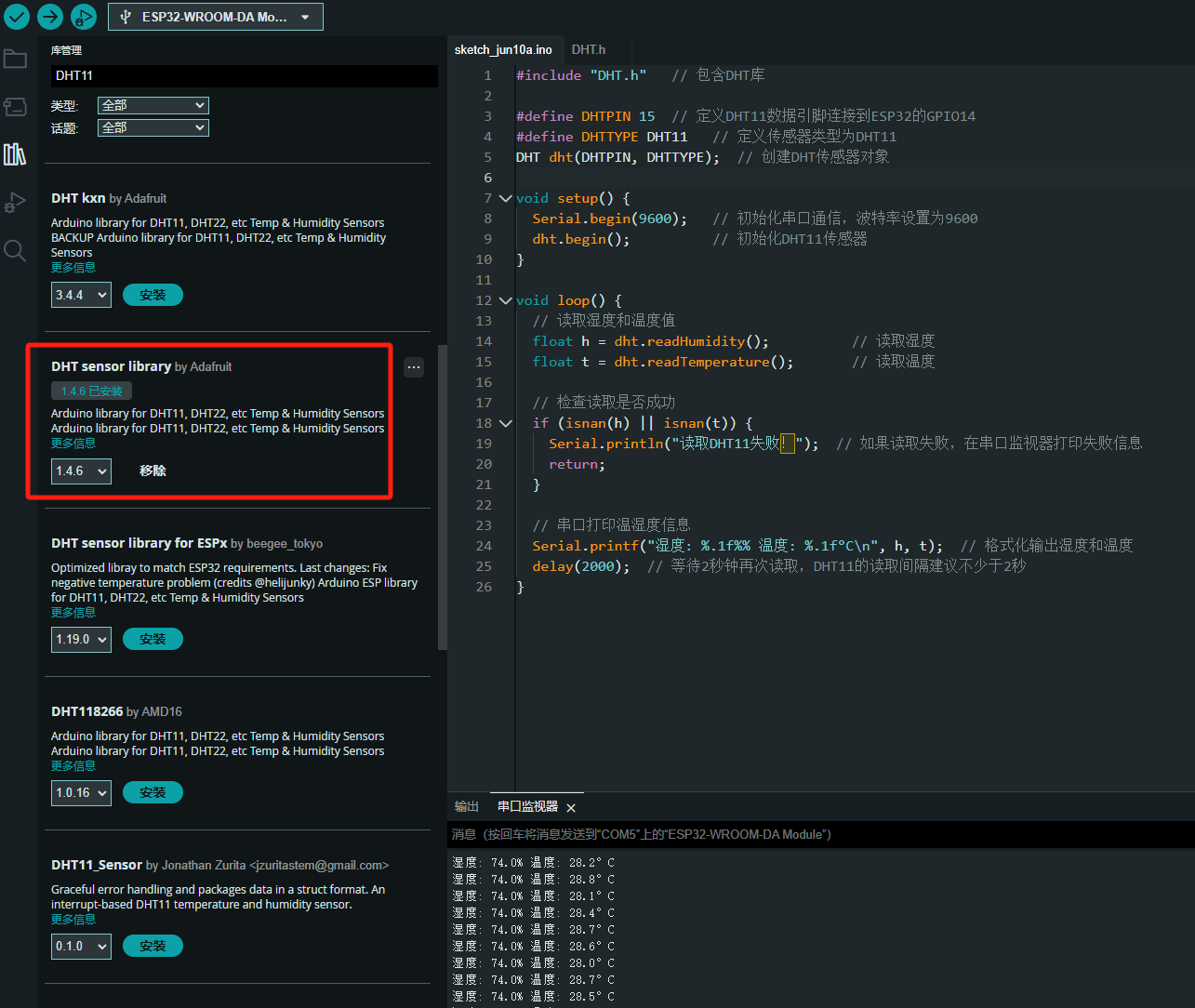
ESP32读取DHT11温湿度数据
芯片:ESP32 环境:Arduino 一、安装DHT11传感器库 红框的库,别安装错了 二、代码 注意,DATA口要连接在D15上 #include "DHT.h" // 包含DHT库#define DHTPIN 15 // 定义DHT11数据引脚连接到ESP32的GPIO15 #define D…...

AI书签管理工具开发全记录(十九):嵌入资源处理
1.前言 📝 在上一篇文章中,我们完成了书签的导入导出功能。本篇文章我们研究如何处理嵌入资源,方便后续将资源打包到一个可执行文件中。 2.embed介绍 🎯 Go 1.16 引入了革命性的 embed 包,彻底改变了静态资源管理的…...
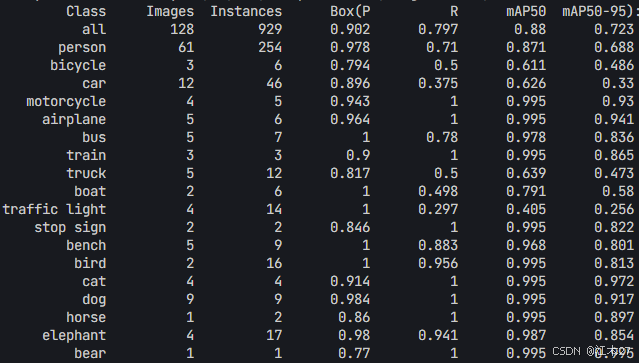
Yolov8 目标检测蒸馏学习记录
yolov8系列模型蒸馏基本流程,代码下载:这里本人提交了一个demo:djdll/Yolov8_Distillation: Yolov8轻量化_蒸馏代码实现 在轻量化模型设计中,**知识蒸馏(Knowledge Distillation)**被广泛应用,作为提升模型…...
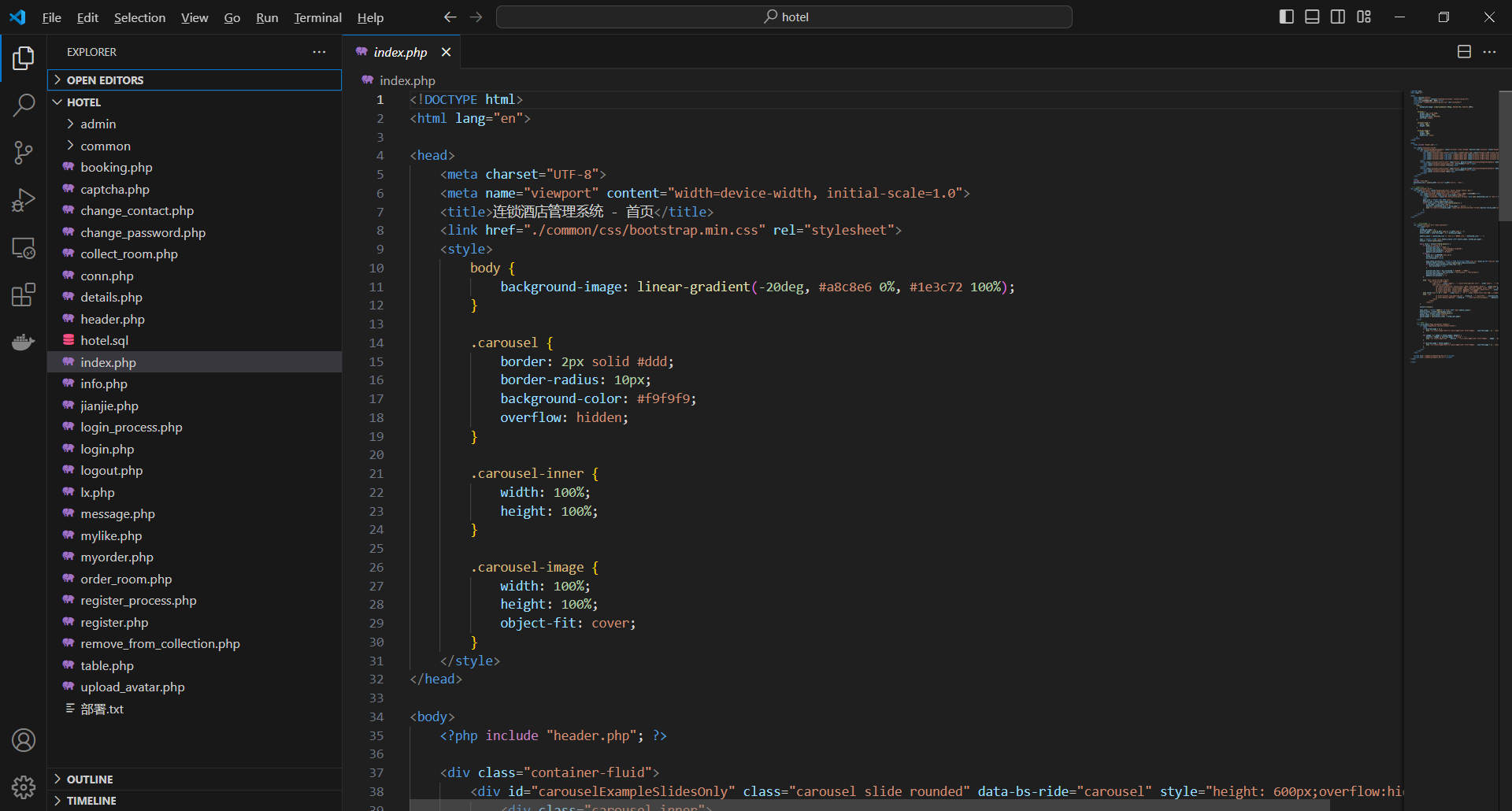
基于PHP的连锁酒店管理系统
有需要请加文章底部Q哦 可远程调试 基于PHP的连锁酒店管理系统 一 介绍 连锁酒店管理系统基于原生PHP开发,数据库mysql,前端bootstrap。系统角色分为用户和管理员。 技术栈 phpmysqlbootstrapphpstudyvscode 二 功能 用户 1 注册/登录/注销 2 个人中…...

实战设计模式之模板方法模式
概述 模板方法模式定义了一个操作中的算法骨架,并将某些步骤延迟到子类中实现。模板方法使得子类可以在不改变算法结构的前提下,重新定义算法中的某些步骤。简单来说,就是在一个方法中定义了要执行的步骤顺序或算法框架,但允许子类…...

云安全与网络安全:核心区别与协同作用解析
在数字化转型的浪潮中,云安全与网络安全作为信息安全的两大支柱,常被混淆但本质不同。本文将从概念、责任分工、技术手段、威胁类型等维度深入解析两者的差异,并探讨它们的协同作用。 一、核心区别 定义与范围 网络安全:聚焦于保…...

Vue3 PC端 UI组件库我更推荐Naive UI
一、Vue3生态现状与UI库选择的重要性 随着Vue3的稳定发布和Composition API的广泛采用,前端开发者面临着UI组件库的重新选择。一个好的UI库不仅能提升开发效率,还能确保项目的长期可维护性。本文将对比三大主流Vue3 UI库(Naive UI、Element …...
